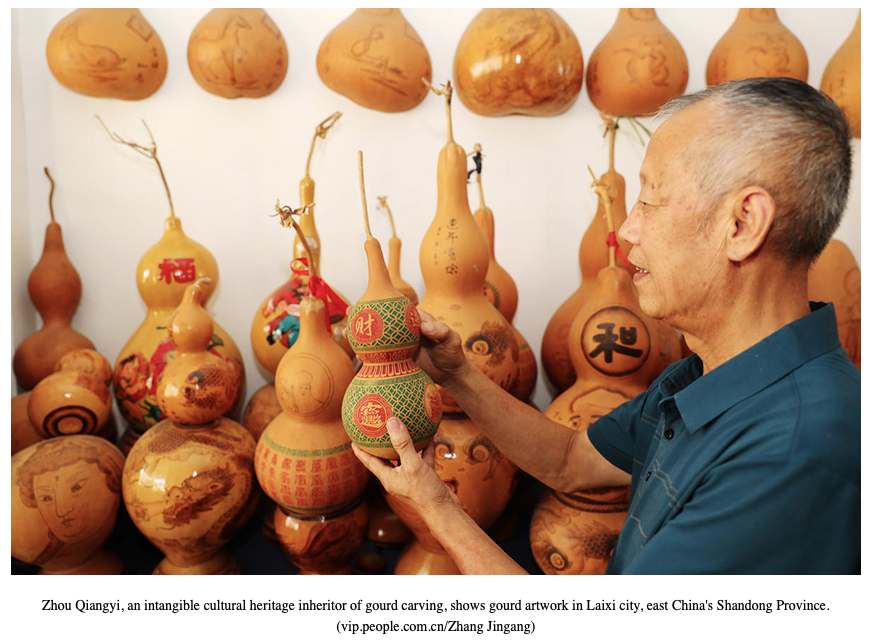Sculpture by Li Dehua
Many countries across the globe have used gourds for culinary traditions, building instruments and even art! With its durable material, once dried, it becomes perfect for carved sculptures. In China the gourd or Hulu 葫芦 symbolizes fortune and wealth because it sounds so similar to Hulu. The gourd seeds are also a symbol of fertility and productivity. For thousands of years the Chinese have used gourds for carrying water, displays, erasing negative energy, and carvings. Artists use different gourds with unique shapes for carvings, expressing their creativity, skill, and mastery.
It’s said that the gourd is one of the eight treasures of Feng Shui, and bringing one in the home can remove negative energies, illnesses and also attract fortune. The gourd is the symbol of Li Tieguai, one of the eight immortals, who has the power to liberate his soul from his body. This symbol of longevity is very important in Chinese culture, and has influenced this beautiful art form. Records of gourd artwork first appeared in the Ming Dynasty 1368-1644 in history books, and can be traced back to the Tang Dynasty (618-907).
Artists use many techniques of creating art with gourds, painting, carving, shaping and polishing to name a few. The trick to this art form is to not alter the natural shape of the gourd but to instead highlight it’s natural beauty with the use of paintings or carving. The most valuable artworks are those that have not been altered much, showcasing the natural aesthetic of the gourd. Gourd art that has not been altered much has the highest artistic value and is quite prized.


